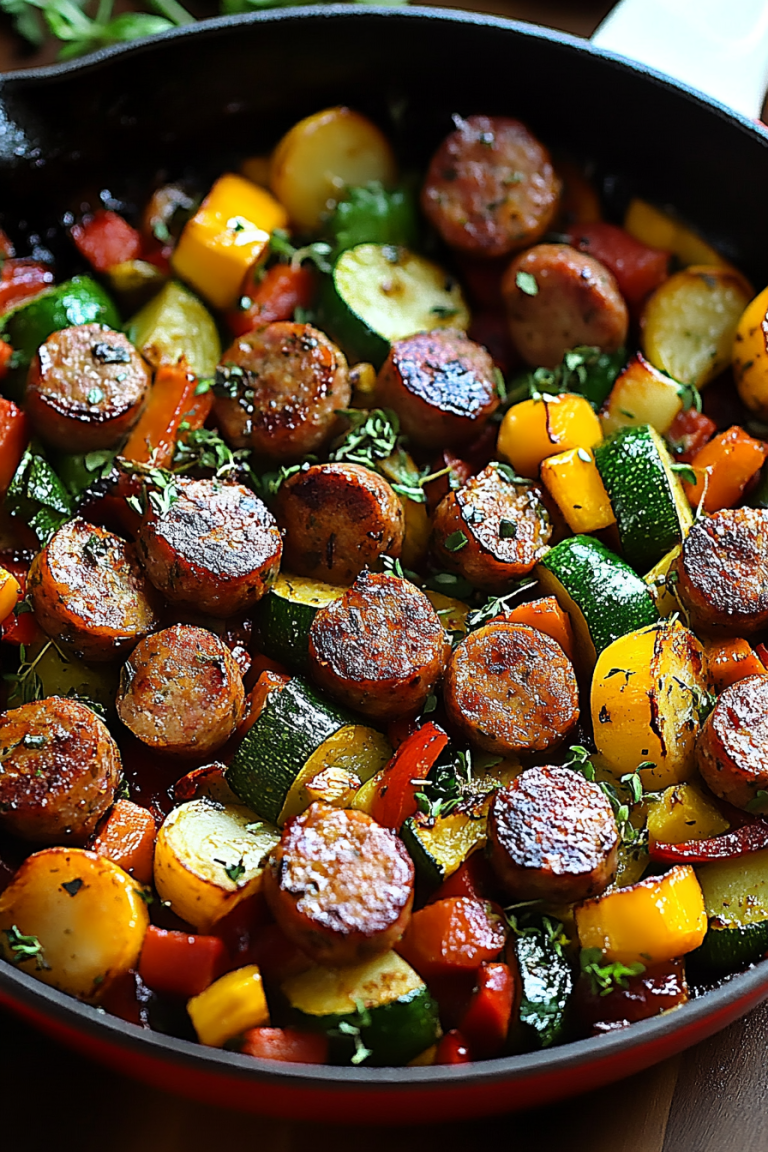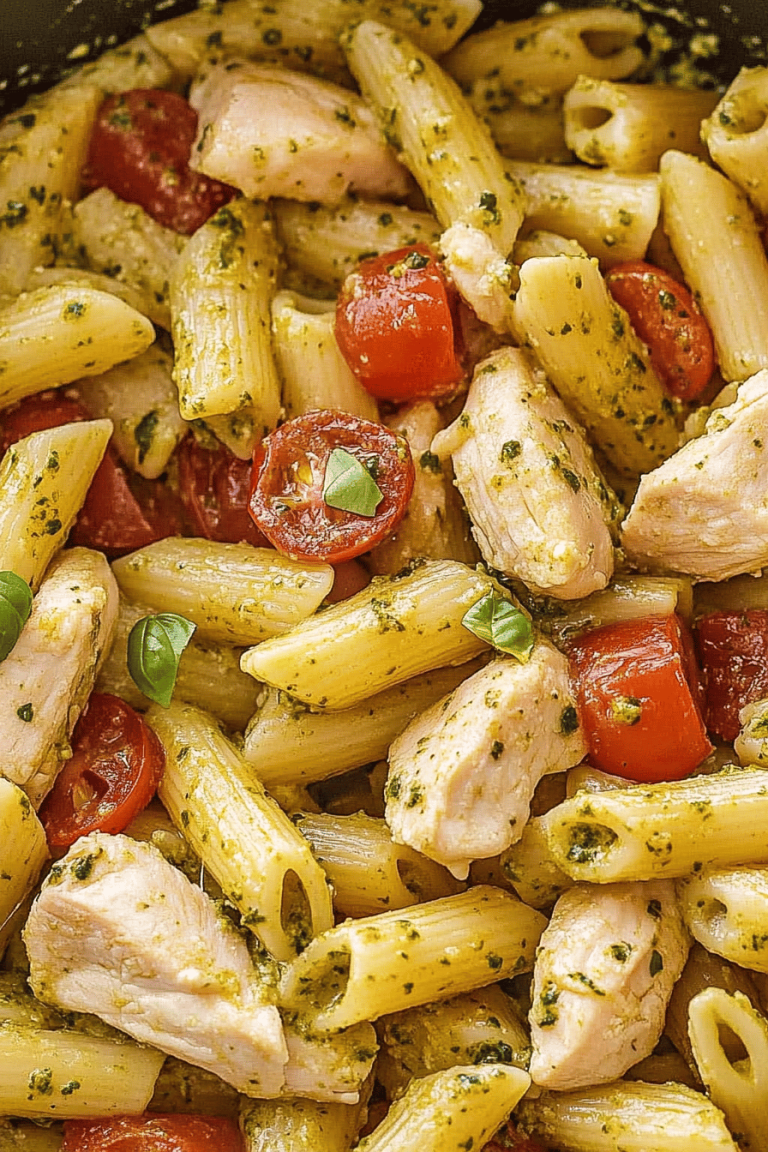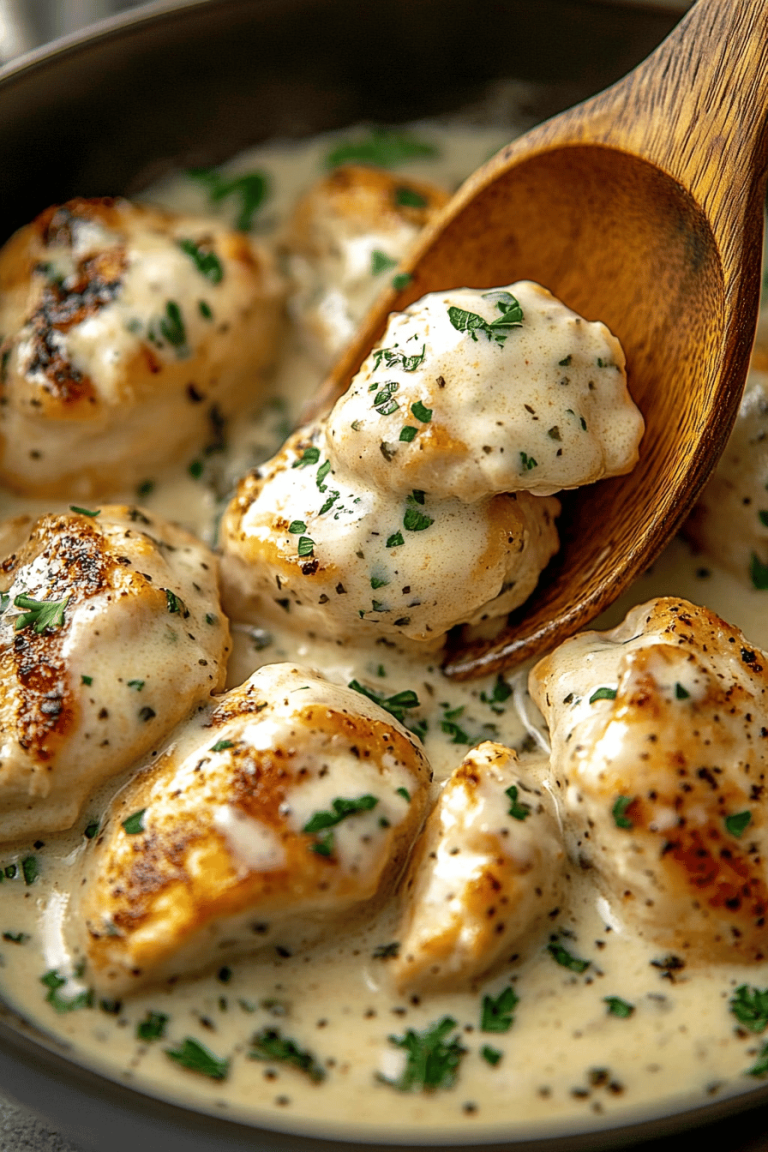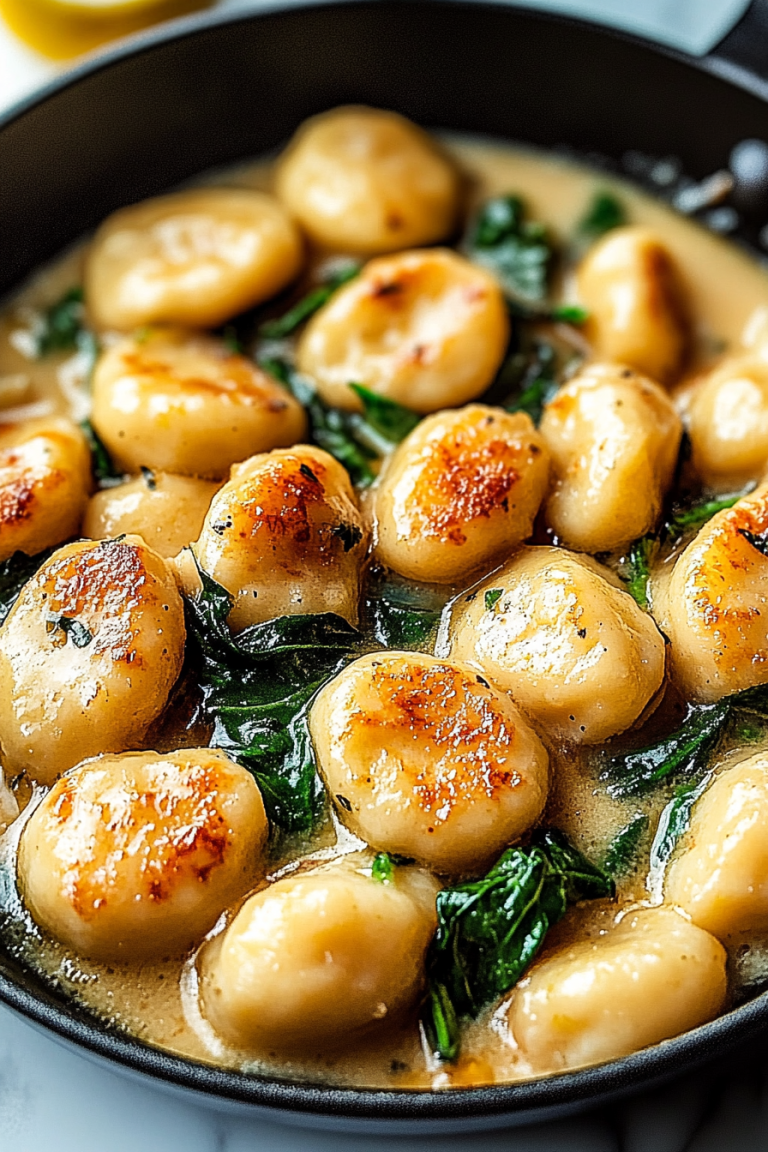Oh, this Irish beef stew… it’s more than just a recipe to me. It’s a warm hug on a chilly evening, the smell that wafts through the house and makes everyone gather in the kitchen, and the dish my dad always requested for his birthday. There’s something incredibly comforting about a hearty, slow-cooked stew, and this one is a true champion. It’s got all those classic flavors you’d expect – tender beef, rich broth, and hearty vegetables – but with a few little touches that make it truly special and, dare I say, even better than the one your grandma might have made (shhh, don’t tell her I said that!). If you’ve ever found yourself craving something deeply satisfying, something that tastes like it’s been simmering for hours but is surprisingly manageable to make, then you’ve stumbled upon your new favorite. Think of it as a more flavorful, soul-warming cousin to a pot roast, but with its own unique, cozy charm.
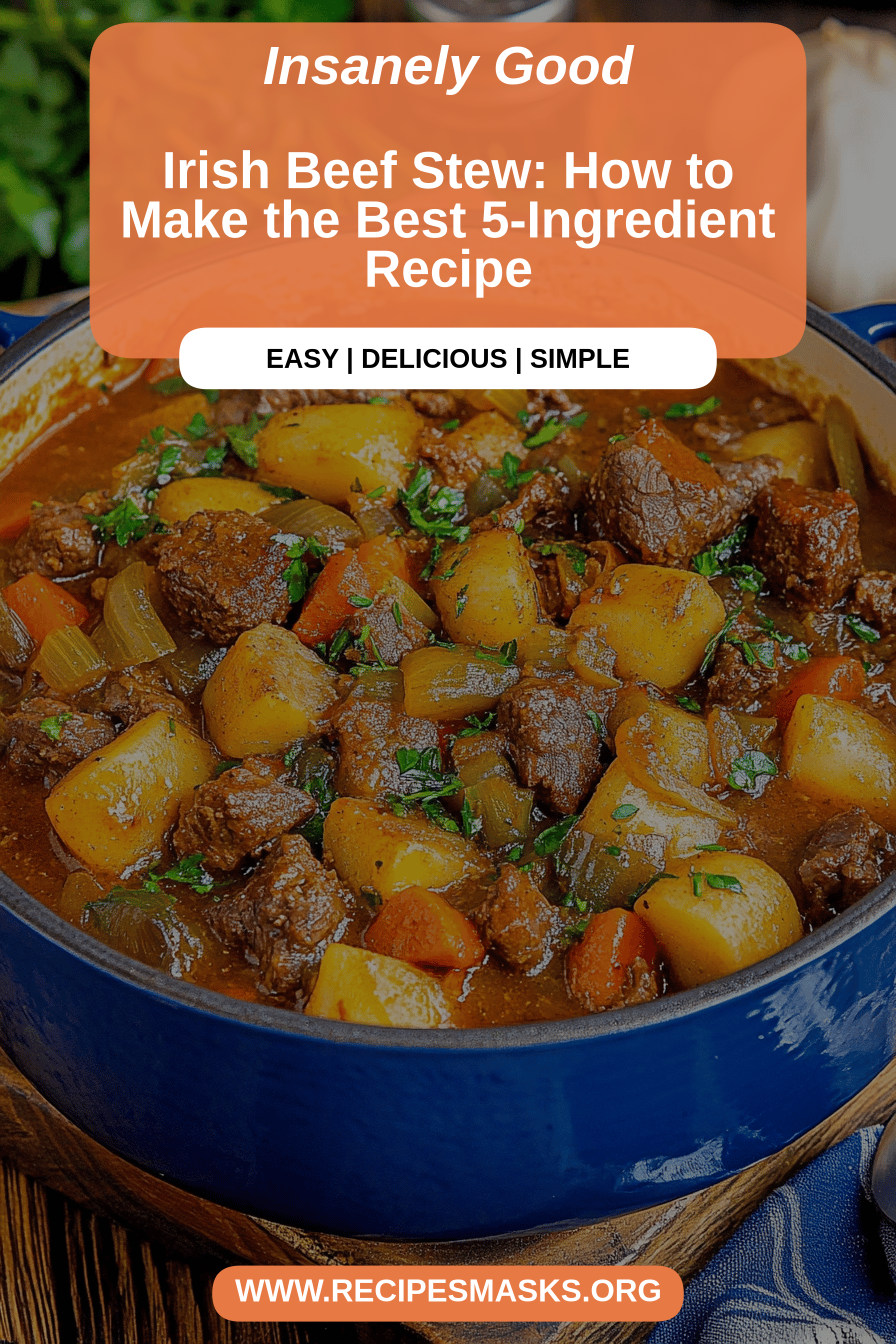
What is Irish Beef Stew?
So, what exactly is this magical Irish beef stew we’re talking about? At its heart, it’s a traditional Irish dish, a cornerstone of comfort food that’s been warming bellies for generations. It’s essentially a slow-cooked marvel featuring tender chunks of beef, root vegetables like carrots and potatoes, and a rich, savory broth, often infused with herbs and sometimes a splash of stout or ale. It’s the kind of meal that speaks of hearth and home, of simple, good ingredients coming together to create something truly magnificent. Think of it as the ultimate cozy blanket in a bowl – hearty, nourishing, and ridiculously flavorful. It’s not fussy, it’s not complicated, but it absolutely delivers on taste. It’s the kind of dish that proves that sometimes, the simplest things are indeed the best.
Why you’ll love this recipe?
Honestly, if you’re looking for a recipe that ticks all the boxes, this Irish beef stew is it. First off, the flavor is just out of this world. We’re talking deep, savory notes from the beef that’s been seared to perfection, the sweetness of the carrots and parsnips, and that incredible richness from the broth that just coats your tongue. It’s the kind of taste that makes you close your eyes and savor every spoonful. And the best part? It’s surprisingly simple to make. I know “stew” can sometimes sound intimidating, but this recipe is designed to be really straightforward. You can prep most of it ahead of time, and then it’s just a matter of letting it do its magic in the oven or on the stovetop. What I love most about this is its cost-efficiency; you’re using humble ingredients that, when cooked low and slow, transform into something truly spectacular. This makes it a lifesaver on busy nights or when you’re feeding a crowd without breaking the bank. Plus, it’s incredibly versatile! Serve it with crusty bread for dipping, over creamy mashed potatoes, or even with a side of simple green beans. It’s a meal that feels like a special occasion but is perfect for any weeknight. It’s definitely a step up from a basic beef and vegetable soup, offering a depth of flavor that’s hard to beat, and it stands proudly alongside other hearty favorites like my Shepherd’s Pie, offering that same comforting, stick-to-your-ribs goodness.
How do I make [Recipe Name]?
Quick Overview
This Irish beef stew is all about building layers of flavor. We start by searing the beef to get a beautiful crust, then sautéing our aromatics before letting everything simmer together gently until the beef is fork-tender and the vegetables are perfectly cooked. It’s a hands-off process for the most part, allowing the ingredients to meld and create that signature rich, comforting flavor. The beauty of this method is that it’s incredibly forgiving, meaning even if you’re new to stew-making, you’re going to end up with fantastic results. It’s the kind of recipe where patience truly pays off, yielding a dish that tastes like it simmered all day.
Ingredients
For the Beef & Base: For the Beef & Base: For the Beef & Base: For the Beef & Base
This is where we build our foundation of flavor! I always opt for a good quality chuck roast, cut into about 1.5-inch cubes. You want something with a good amount of marbling; that’s where the tenderness and rich beefy flavor come from. Don’t skimp on searing! I usually use about 2 tablespoons of a neutral oil like vegetable or canola oil, but you could also use beef tallow for an extra layer of flavor if you have it. Seasoning the beef generously with salt and freshly cracked black pepper is crucial. You’ll also need a large onion, chopped, and a few cloves of garlic, minced. My secret weapon? A tablespoon of tomato paste for depth and a touch of richness. And for that classic Irish touch, I love adding about a cup of rich beef broth or stock – low sodium is usually best so you can control the saltiness yourself. For a richer, more authentic flavor, a splash of Guinness or any dark Irish stout is a game-changer; it adds this incredible malty depth that just sings with the beef.
For the Hearty Vegetables:
Here’s where we add the substance and sweetness. You’ll need about 1 pound of potatoes, peeled and cut into chunks. I usually go for Yukon Golds or red potatoes because they hold their shape well. Carrots are a must, of course – about 4-5 medium ones, peeled and cut into thick rounds or chunks. I also love adding a couple of parsnips for their slightly sweet, earthy flavor; just peel and chop them like the carrots. Some people add celery, and while it’s lovely, I sometimes skip it to let the other flavors shine. For that herbaceous aroma, a few sprigs of fresh thyme and a bay leaf are essential. If you can’t find fresh thyme, about a teaspoon of dried thyme will do in a pinch, but fresh really makes a difference here.
For Thickening and Finishing:
Once everything has simmered and the beef is meltingly tender, we want our stew to have that perfect, luscious consistency. You have a couple of options. My favorite is a simple slurry made with 2 tablespoons of all-purpose flour mixed with about 1/4 cup of water until smooth. Stir this into the simmering stew and let it thicken. Alternatively, you can use a cornstarch slurry (2 tablespoons cornstarch mixed with 1/4 cup cold water). You’ll also want some fresh parsley, chopped, for a pop of freshness right at the end. A little dash of Worcestershire sauce can add another layer of umami if you feel it needs it. And of course, don’t forget to taste and adjust seasoning with salt and pepper before serving!
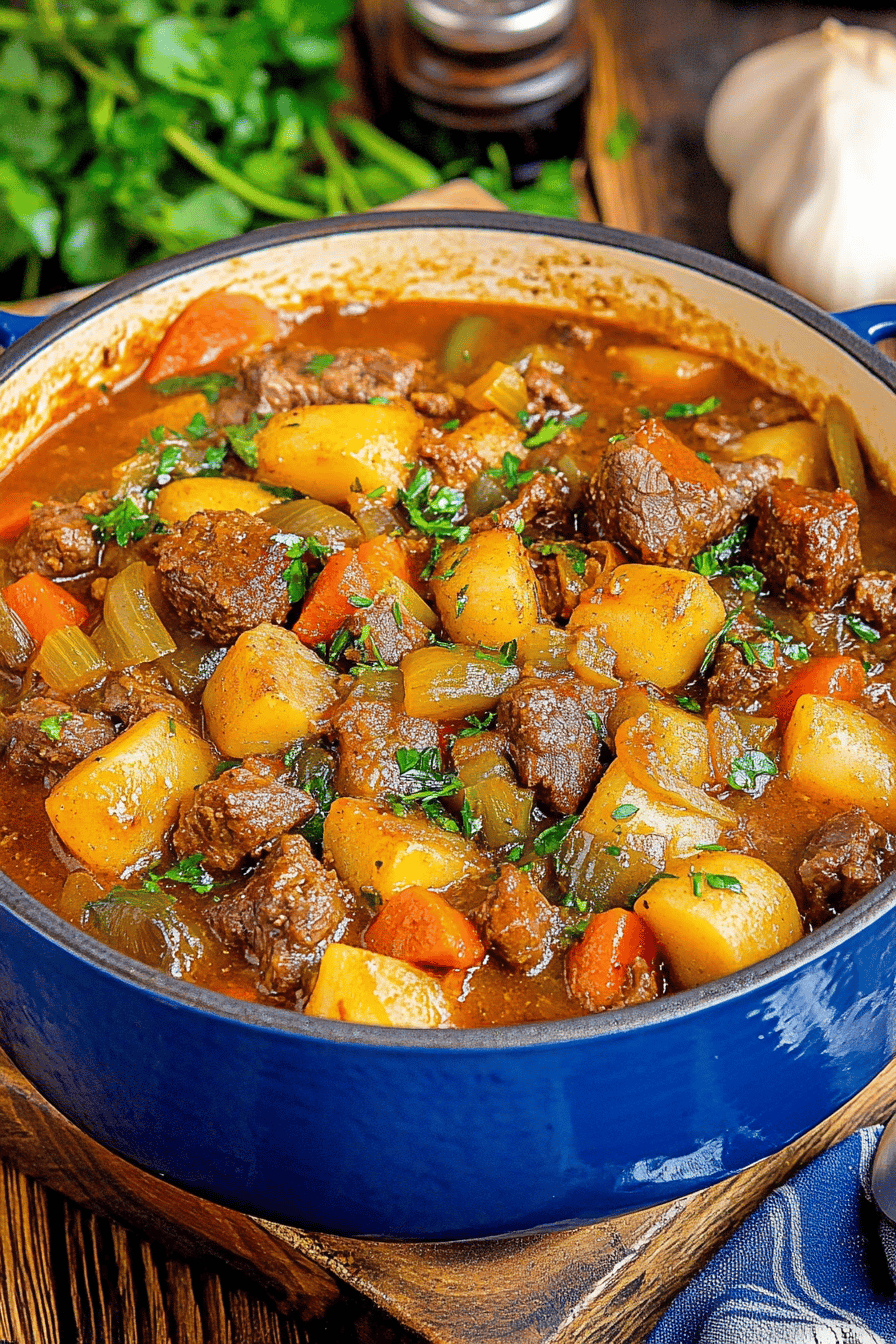
Step-by-Step Instructions
Step 1: Preheat & Prep Pan
Okay, first things first. Get a big, heavy-bottomed pot or Dutch oven – one that can go from the stovetop to the oven if you plan to finish it that way. If you’re using the oven, preheat it to 325°F (160°C). Pat your cubed beef completely dry with paper towels. This is a *crucial* step for getting a good sear. Wet meat steams, it doesn’t brown, and that beautiful brown crust is where so much flavor lives. Season the beef generously all over with salt and freshly cracked black pepper. Trust me, don’t be shy with the seasoning here!
Step 2: Mix Dry Ingredients
This step is for the thickening agent later, so we’ll do it when we need it. For now, focus on getting that beef seared.
Step 3: Mix Wet Ingredients
Again, we’ll prepare our wet ingredients as we go in the cooking process, focusing on building the stew layer by layer.
Step 4: Combine
This is more about combining the seared beef with our aromatics and liquids. Heat your oil in that Dutch oven over medium-high heat. Once it’s shimmering (but not smoking!), add the beef in batches. Don’t overcrowd the pot, or you’ll end up steaming the meat. You want a deep, golden-brown crust on all sides. This might take a few minutes per batch. Remove the seared beef to a plate and set it aside. Pour off most of the fat, leaving about a tablespoon in the pot. Add your chopped onion and cook over medium heat until softened and translucent, about 5-7 minutes. Stir in the minced garlic and tomato paste and cook for another minute until fragrant. If you’re using stout, now’s the time to add it! Pour in about half a cup and scrape up any browned bits from the bottom of the pot – that’s pure flavor gold!
Step 5: Prepare Filling
The “filling” in our stew context refers to the beef and vegetables that will be simmering away. Once your onions and garlic are softened and you’ve deglazed with stout (if using), return the seared beef to the pot. Add the beef broth, herbs (thyme and bay leaf), and bring it all to a simmer. If the liquid doesn’t quite cover the meat, you can top it up with a little more broth or water. At this point, you can either cover the pot and let it simmer gently on the stovetop on low heat, or cover it and pop it into your preheated oven. You’ll want to cook it for about 1.5 to 2 hours, until the beef is starting to get tender.
Step 6: Layer & Swirl
This step isn’t applicable to a traditional beef stew. We’re not layering batters or swirling doughs here. The “magic” happens as the ingredients simmer together in the pot, allowing the flavors to meld naturally.
Step 7: Bake
If you chose the oven method in Step 5, this is where it happens! Let the stew cook, covered, for about 1.5 to 2 hours until the beef is fork-tender. After that initial braising time, add your prepared vegetables (potatoes, carrots, parsnips) to the pot. Give everything a good stir. Make sure the vegetables are mostly submerged in the liquid. Cover the pot again and continue to bake for another 45 minutes to 1 hour, or until the vegetables are tender and the beef is exceptionally succulent. If you’re doing this on the stovetop, once you’ve added the vegetables, cover and simmer on low for about 1 to 1.5 hours, stirring occasionally, until everything is tender. The goal is fork-tender beef and perfectly cooked vegetables.
Step 8: Cool & Glaze
We don’t typically “glaze” a beef stew in the traditional sense, but we do thicken it and add finishing touches. Once the beef and vegetables are tender, it’s time to thicken the stew if needed. In a small bowl, whisk together 2 tablespoons of all-purpose flour with about 1/4 cup of cold water until you have a smooth slurry. Stir this into the simmering stew. Let it cook, stirring gently, for about 5-10 minutes until the stew has thickened to your desired consistency. If it’s not thick enough, you can make another small slurry. Remove the bay leaf and thyme sprigs. Taste and adjust seasoning with salt and pepper. Stir in a generous handful of freshly chopped parsley for brightness.
Step 9: Slice & Serve
Ladle generous portions of this glorious Irish beef stew into warm bowls. It’s absolutely divine served with crusty bread for soaking up every last drop of that rich gravy. Alternatively, serve it spooned over creamy Mashed potatoes or alongside some simple steamed greens. The aroma alone will have everyone at the table eager to dig in!
What to Serve It With
This Irish beef stew is practically a meal in itself, but if you’re looking to round out the experience, there are so many fantastic options! For a truly classic pairing, you absolutely cannot go wrong with a hunk of crusty crusty Irish soda bread or a good quality sourdough. The holes in the bread are perfect for soaking up all that rich, savory broth. If you’re craving something even more decadent, serving it over a bed of fluffy mashed potatoes is pure comfort food bliss. My kids absolutely love it this way; they call it “potato clouds.” For a lighter accompaniment, a simple side salad with a tangy vinaigrette can cut through the richness beautifully, or some steamed Green beans or peas add a lovely bit of freshness. If you’re feeling a bit more adventurous, a dollop of sour cream or crème fraîche on top adds a nice creamy tang. And don’t forget the beverages! A pint of the same stout you might have used in the stew is a natural choice, or a medium-bodied red wine like a Merlot also pairs wonderfully.
Top Tips for Perfecting Your [Recipe Name]
Making a truly exceptional Irish beef stew comes down to a few key techniques and a bit of patience. First, and I can’t stress this enough, get a good sear on your beef. Don’t crowd the pan! Browning the meat in batches over medium-high heat until it’s deeply caramelized is non-negotiable. This Maillard reaction is what builds foundational flavor. Second, use good quality beef. Chuck roast is my go-to because the fat and connective tissue break down during the long, slow cooking process, resulting in incredibly tender and flavorful meat. If you use something too lean, you’ll end up with dry, stringy beef. Third, don’t rush the simmering process. Whether you’re cooking it on the stovetop or in the oven, low and slow is the name of the game. The longer it cooks gently, the more tender the beef will become and the more the flavors will meld. I’ve learned over the years that sometimes it just needs an extra hour to reach that perfect fork-tender stage. When it comes to the vegetables, I prefer to add them in the last hour or so of cooking. This ensures they’re perfectly tender but not mushy. If you’re looking for a thicker stew, my favorite trick is the flour-water slurry, but I always make sure to cook it out for a few minutes to get rid of any raw flour taste. And for a final flavor boost, don’t forget those fresh herbs and a good squeeze of lemon juice or a dash of Worcestershire sauce right at the end to brighten everything up. I’ve experimented with adding different root vegetables, and while carrots and potatoes are classic, I find parsnips add a lovely sweetness, and even a swede or rutabaga can be a nice addition if you like that earthy flavor. Just make sure to cut them into similar-sized pieces so they cook evenly.
Storing and Reheating Tips
One of the best things about this Irish beef stew is that it tastes even better the next day! When it comes to storing, let the stew cool down completely at room temperature before transferring it to airtight containers. For refrigerator storage, it’ll keep beautifully for about 3-4 days. Just make sure it’s properly sealed. When you’re ready to reheat, the best way is to do it gently on the stovetop over low heat. Stir occasionally to prevent sticking and ensure it heats through evenly. You might need to add a splash of beef broth or water if it’s thickened up too much during storage. If you’re in a real hurry, you can reheat individual portions in the microwave, but I find the stovetop method gives you the best results for texture and flavor. For longer-term storage, this stew freezes wonderfully. Once cooled, portion it into freezer-safe containers or heavy-duty freezer bags. It can be stored in the freezer for up to 3 months. To thaw, transfer it to the refrigerator overnight and then reheat as usual. I’ve found that the texture and flavor hold up exceptionally well when frozen and reheated. Just a note on the glaze (which in this case refers to the thickened gravy): it will set up beautifully during refrigeration and reheating. There’s no need to add it separately once reheated, as it’s already part of the stew!
Frequently Asked Questions
Final Thoughts
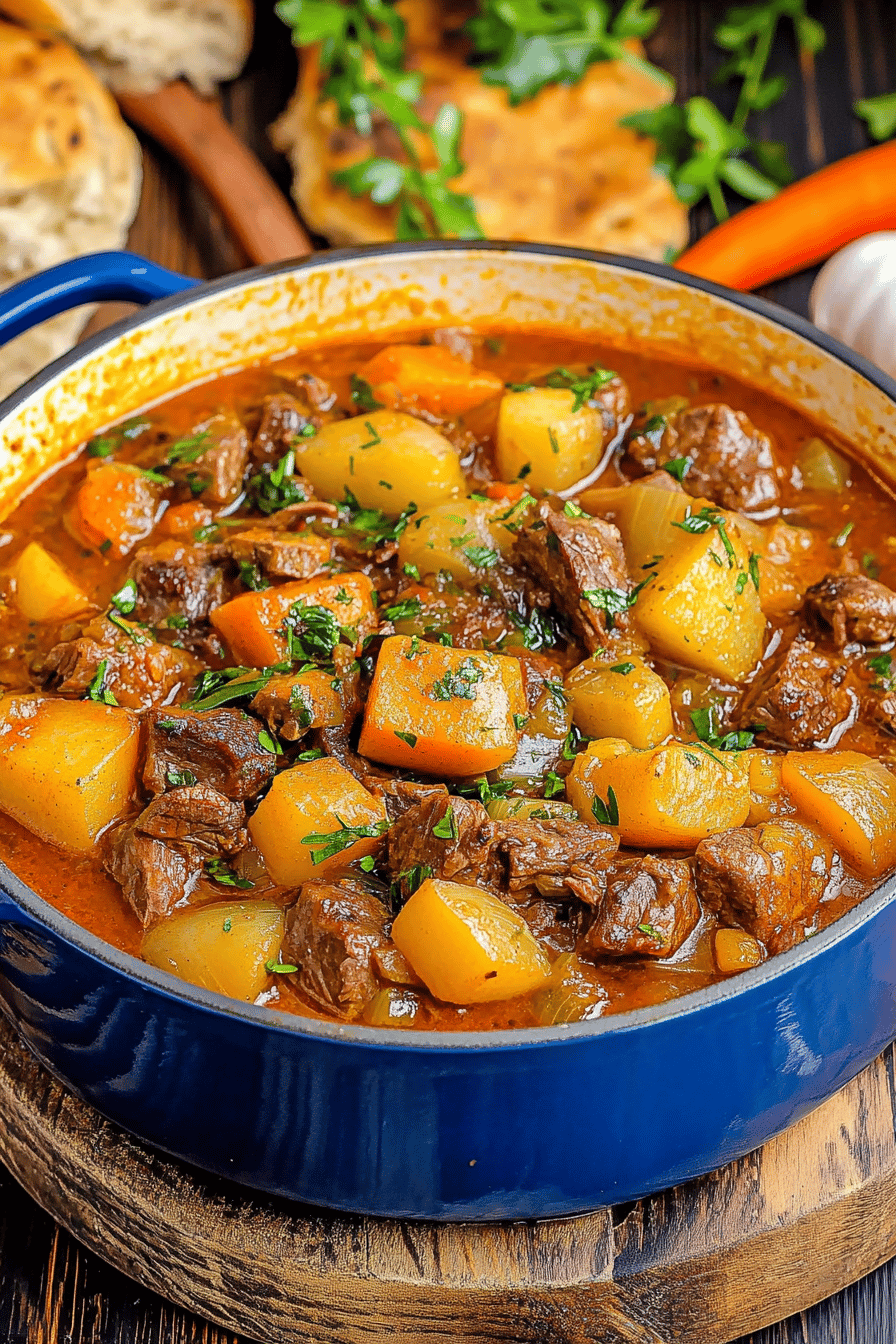
There you have it – my absolute favorite Irish beef stew recipe! It’s a dish that truly embodies comfort and home cooking for me, and I sincerely hope it brings as much warmth and joy to your table as it does to mine. The combination of tender beef, hearty vegetables, and that rich, savory broth is simply unbeatable. It’s proof that with a little time and love, you can create something truly spectacular from simple, honest ingredients. If you try this recipe, please, please let me know how it turns out in the comments below! I love hearing your feedback, and I’m always so curious to see your variations and successes. Don’t forget to rate the recipe if you enjoyed it, and feel free to share it with any friends who appreciate a good, hearty meal. Happy cooking, and I can’t wait to hear all about your delicious stew!
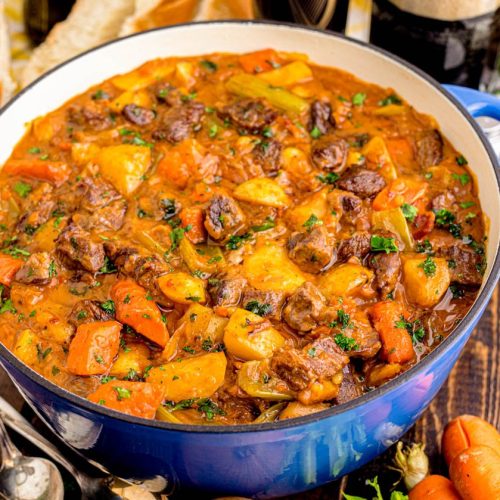
Irish Beef Stew
Ingredients
Main Ingredients
- 2.5 pounds beef chuck roast cut into 1.5-inch pieces
- 0.5 cup all-purpose flour
- 0.5 teaspoon salt
- 0.25 teaspoon black pepper
- 3 tablespoons olive oil
- 2 large onions chopped
- 4 cloves garlic minced
- 1 tablespoon tomato paste
- 1 bottle Guinness stout 12 ounce
- 4 cups beef broth
- 1 tablespoon Worcestershire sauce
- 1 pound carrots peeled and cut into 1-inch pieces
- 1 pound potatoes peeled and cut into 1-inch pieces
- 0.5 cup fresh parsley chopped, for garnish
Instructions
Preparation Steps
- In a large bowl, toss the beef with flour, salt, and pepper until evenly coated.
- Heat olive oil in a large Dutch oven or heavy-bottomed pot over medium-high heat. Brown the beef in batches, about 2-3 minutes per side. Remove beef from the pot and set aside.
- Add the chopped onions to the pot and cook until softened, about 5-7 minutes. Add the minced garlic and tomato paste and cook for another minute until fragrant.
- Pour in the Guinness stout and beef broth, scraping up any browned bits from the bottom of the pot.
- Return the browned beef to the pot. Stir in the Worcestershire sauce.
- Bring the stew to a simmer, then reduce the heat to low, cover, and cook for 1.5 hours, or until the beef is tender.
- Add the carrots and potatoes to the pot. Cover and continue to cook for another 30-45 minutes, or until the vegetables are tender.
- Taste and adjust seasoning if necessary. Serve hot, garnished with fresh parsley.



